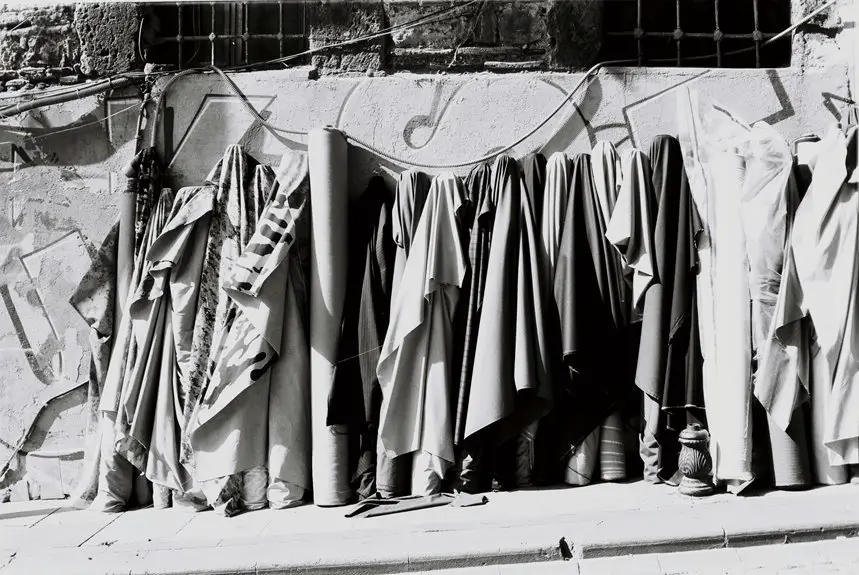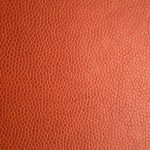If you’re looking to buy silk fabric in China, prices usually range from $8 to over $50 per meter depending on the type and quality. Mulberry silk is pricier due to its fine texture, while tussah and habotai are more affordable. Costs also shift based on region, season, and whether you buy wholesale or retail. Knowing these factors can help you get the best deal and understand the market better for your silk needs.
Table of Contents
Key Takeaways
- Mulberry silk prices range from $20 to $50 per meter, while more affordable types like Tussah silk cost between $10 and $25 per meter.
- Wholesale silk fabric prices are 30-50% cheaper than retail, with bulk buying and negotiation offering additional savings.
- Silk fabric costs vary regionally, with premium prices in Zhejiang and Jiangsu, and lower prices in Sichuan and Yunnan provinces.
- Seasonal demand spikes during spring, autumn, and Chinese Lunar New Year cause price increases, while summer and winter see discounts.
- Authentic silk is best purchased from Suzhou and Hangzhou markets or verified online platforms like Alibaba and Taobao for quality assurance.
Factors Influencing the Price of Silk Fabric in China
Although several elements affect silk fabric prices in China, understanding these key factors can help you make informed purchasing decisions.
First, the quality of the raw silk plays a major role; higher-grade silk, like mulberry silk, costs more due to its smoothness and durability.
Next, the production process impacts price—handwoven silk demands more labor, increasing costs compared to machine-made options.
You should also consider regional differences; silk from renowned silk-producing provinces like Zhejiang or Jiangsu often carries a premium.
Seasonal demand influences prices too, especially around holidays when silk gifts are popular.
Finally, supply chain factors, including the cost of sericulture and transportation, contribute to fluctuations.
Different Types of Silk Fabric and Their Price Ranges
Understanding the factors that influence silk fabric prices sets the stage for exploring the different types of silk available and their typical price ranges.
When you browse silk fabrics in China, you’ll encounter varieties like Mulberry silk, which is top-quality and ranges from $20 to $50 per meter.
Tussah silk, made from wild silkworms, is more affordable, usually between $10 and $25 per meter.
You might also find Eri silk, known for its durability and warmth, priced around $15 to $30 per meter.
Habotai silk, lightweight and soft, is one of the least expensive types, often costing $8 to $20 per meter.
Knowing these price brackets helps you decide based on your budget and project needs without compromising on style or quality.
How Silk Quality Affects Cost
When you choose silk, the type—Mulberry or Tussah—makes a big difference in price due to quality variations.
Higher thread counts mean finer, smoother fabric, which costs more.
Plus, the dyeing and finishing processes add to the final cost based on how refined and durable you want the silk to be.
Mulberry Vs Tussah
Since silk quality directly influences its price, comparing Mulberry and Tussah silk helps you see why costs vary.
Mulberry silk, produced by silkworms feeding exclusively on mulberry leaves, offers a finer, smoother, and more lustrous fiber. This higher quality demands a premium price, making Mulberry silk more expensive.
On the other hand, Tussah silk comes from wild silkworms that consume various leaves, resulting in coarser, less uniform fibers. While Tussah silk is more affordable, it lacks the softness and sheen of Mulberry.
When choosing between them, consider your budget and desired fabric characteristics. Mulberry silk suits luxurious, delicate garments, whereas Tussah works well for more rustic or casual uses.
Understanding these differences helps you make informed decisions about silk fabric costs in China.
Thread Count Impact
Although many factors influence silk prices, thread count plays an essential role in determining fabric quality and cost.
When you choose silk with a higher thread count, you’re getting a denser weave, which means the fabric feels smoother, looks richer, and lasts longer. This increased quality naturally drives up the price.
On the other hand, lower thread counts result in lighter, more breathable silk but at a reduced cost and durability.
Keep in mind that extremely high thread counts don’t always guarantee better silk; they must be balanced with the silk type and weaving technique.
Understanding thread count helps you make informed decisions based on your budget and the intended use of your silk fabric.
Dyeing and Finishing
Beyond thread count, the way silk is dyed and finished greatly impacts its price and quality.
When you choose silk, the dyeing process affects color vibrancy and fabric durability. High-quality silk undergoes careful dyeing with eco-friendly, colorfast dyes that prevent fading, which costs more but guarantees long-lasting beauty.
Finishing treatments like mercerizing or calendaring enhance silk’s sheen, softness, and wrinkle resistance, raising its value. If you want silk that feels smooth and looks lustrous, expect to pay extra for meticulous finishing.
Cheaper silks often skip these steps, resulting in dull color and rough texture.
Regional Variations in Silk Prices Across China
You’ll find that silk prices vary considerably from province to province in China, influenced by local production and demand.
Urban areas typically have higher costs due to increased overhead and fashion trends.
Understanding these regional differences can help you make smarter purchasing decisions.
Price Differences by Province
Since silk production varies widely across China, you’ll notice significant price differences from one province to another.
In provinces like Zhejiang and Jiangsu, known for high-quality silk, prices tend to be higher due to superior craftsmanship and advanced technology.
Meanwhile, in provinces such as Sichuan and Yunnan, you might find more affordable silk because of lower labor costs and less established markets.
However, silk from these regions may vary in texture and durability.
If you’re sourcing silk, consider these provincial differences carefully. Paying a bit more in premium areas could mean better quality, while cheaper options might suit budget-conscious projects.
Understanding these provincial price variations helps you make smarter purchasing decisions tailored to your needs.
Urban vs. Rural Costs
Price differences within provinces often reflect whether silk is sourced from urban centers or rural areas.
When you buy silk from urban areas, you’ll usually pay more due to higher rent, labor costs, and premium quality control. Urban workshops often offer finer silk with intricate designs, which drives prices up.
In contrast, rural areas tend to produce raw or semi-processed silk at lower prices since overhead costs are less. However, you might sacrifice consistency and finish quality when opting for rural silk.
If you’re budgeting, rural silk offers affordability, but if you need top-tier fabric, urban sources are worth the investment.
Understanding these regional cost dynamics helps you make smarter choices based on your quality needs and budget constraints.
Wholesale Vs Retail Prices for Silk Fabric
When buying silk fabric in China, understanding the difference between wholesale and retail prices can save you a significant amount of money. Wholesale prices are typically lower because you’re buying in bulk, while retail prices are higher due to smaller quantities and added overhead costs.
Knowing the wholesale and retail price differences can help you save big when buying silk fabric in China.
Here’s what you should keep in mind:
- Minimum Order Quantities: Wholesalers require larger purchases, so guarantee you can meet these minimums to get the best price.
- Price Per Meter: Wholesale rates can be 30-50% cheaper than retail, which is ideal if you need large amounts.
- Negotiation Flexibility: You have more room to negotiate prices when buying wholesale, whereas retail prices are usually fixed.
Knowing these differences helps you choose the right buying method based on your needs and budget.
Comparing Raw Silk and Processed Silk Costs
When you look at raw silk prices, factors like quality and production methods play a big role.
Processed silk, on the other hand, reflects market demand and finishing techniques.
Understanding these differences helps you make smarter buying decisions.
Raw Silk Price Factors
Several key factors influence the cost differences between raw silk and processed silk in China.
When you’re comparing prices, understanding these factors helps you make smarter purchasing decisions.
- Quality of cocoons: The quality of silkworm cocoons directly impacts raw silk price. Higher-grade cocoons yield finer, stronger fibers, which cost more upfront.
- Harvesting and reeling methods: Manual versus mechanized reeling affects costs. Manual reeling is labor-intensive, increasing raw silk prices, while mechanized methods reduce expenses.
- Seasonal and regional variations: Silk production fluctuates with seasons and regions.
You’ll notice prices rise during low production periods or in regions with limited silk farming, affecting raw silk costs.
Processed Silk Market Rates
Although raw silk forms the foundation of the silk industry, processed silk commands higher market rates due to the additional labor, technology, and quality enhancements involved.
When you compare raw silk to processed silk, you’ll notice the price difference reflects the finishing steps—degumming, dyeing, weaving, and quality control—that add value.
Raw silk might cost you between $20 to $40 per kilogram, but processed silk fabric can range from $50 up to $150 per meter, depending on the grade and complexity.
You pay more because processed silk offers better texture, durability, and visual appeal, making it suitable for luxury garments and high-end products.
Understanding these costs helps you decide whether to invest in raw material or finished silk fabric for your projects.
Impact of Silk Fabric Weight and Width on Pricing
Because silk fabric’s weight and width directly affect how much material you get, they play an essential role in determining the price.
Silk fabric’s weight and width directly influence the amount of material and ultimately shape its price.
When choosing silk, you need to understand how these measurements impact cost:
- Weight (GSM – grams per square meter): Heavier silk usually means denser fibers, leading to a higher price per meter because it contains more raw material.
- Width: Wider fabric cuts provide more area per yard or meter, potentially lowering the price per unit length but increasing the overall cost due to more material.
- Application: Thicker, wider silk suits upholstery or heavy garments, justifying a higher price, while lighter, narrow fabric is often cheaper and best for delicate uses.
Seasonal Trends Affecting Silk Fabric Prices
Understanding how weight and width influence silk pricing sets the stage for exploring how seasonal trends also shape costs.
When you shop for silk fabric in China, you’ll notice prices fluctuate with the seasons. For instance, demand peaks during spring and autumn as designers prepare for new collections, pushing prices higher. Conversely, winter and summer months often see lower demand, leading to discounted rates.
Additionally, the Chinese Lunar New Year can temporarily disrupt supply chains, causing brief price spikes. Weather conditions also play a role; heavy rains during the monsoon season can affect silkworm cultivation, limiting raw material availability and increasing costs.
Where to Buy Authentic Silk Fabric in China
Where can you find authentic silk fabric in China without falling for imitations? To guarantee you get genuine silk, you need to know the right places to shop. Here are three top options:
- Silk Markets in Suzhou – Known as the “Silk Capital,” Suzhou offers numerous reputable markets where you can inspect fabric quality firsthand.
- Hangzhou’s Silk Factory Outlets – Visit factory outlets here for direct access to authentic silk at reasonable prices, cutting out middlemen.
- Established Online Platforms – Trusted Chinese e-commerce sites like Alibaba and Taobao feature verified sellers with customer reviews, helping you spot real silk easily.
Tips for Negotiating the Best Price on Silk Fabric
After finding the right place to buy authentic silk fabric, your next step is to negotiate a fair price. Approach sellers confidently, knowing market rates. Build rapport by showing genuine interest and ask for discounts on bulk purchases. Don’t hesitate to compare prices from different vendors to strengthen your bargaining position. Remember, patience pays off—be ready to walk away if the deal doesn’t feel right.
| Tip | Why It Helps |
|---|---|
| Research market prices | Know the average cost |
| Show genuine interest | Builds trust and rapport |
| Ask about bulk discounts | Saves money on larger orders |
| Be prepared to walk away | Avoid overpaying or rushed deals |
Use these strategies to secure the best price without compromising quality.
Frequently Asked Questions
How Is Silk Fabric Traditionally Produced in China?
You start by harvesting silkworm cocoons, then carefully boil them to extract silk threads. Next, you unwind and spin these threads into yarn before weaving them into luxurious silk fabric using traditional looms.
What Are the Environmental Impacts of Silk Production?
Imagine nature’s delicate web strained by enthusiastic hands; silk production uses water and energy, sometimes stressing ecosystems. You’ll want to choose responsibly, balancing beauty with environmental care to keep Earth’s fabric strong and vibrant.
Can Silk Fabric Be Custom-Dyed or Patterned in China?
Yes, you can get silk fabric custom-dyed or patterned in China. Many manufacturers offer personalized services, using traditional and modern techniques to create unique designs that meet your specific preferences and quality standards.
How Long Does It Take to Produce a Batch of Silk Fabric?
You might be surprised, but producing a batch of silk fabric usually takes about 15 to 30 days. It depends on factors like design complexity and order size, so be ready for some patience during this delicate process.
Are There Certifications to Verify Authenticity of Chinese Silk?
Yes, you can find certifications like the China Quality Certification (CQC) and ISO standards to verify Chinese silk’s authenticity. Always check labels and ask sellers for these to guarantee you’re getting genuine, high-quality silk fabric.
- Making the Perfect Bullseye Tie-Dye: Tips and Tricks - July 13, 2025
- What You Need to Start Tie-Dyeing: A Complete Supply List - July 13, 2025
- Exploring Global Resist-Dyeing Traditions - July 13, 2025






